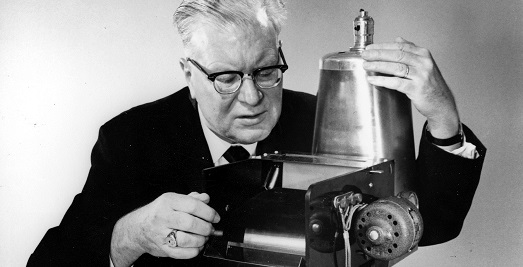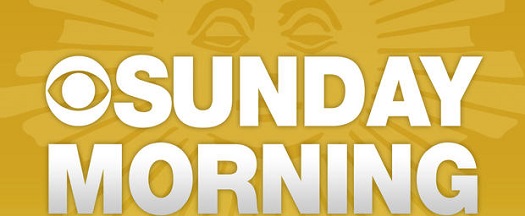
At Xerox, we love stubborn people. We have a healthy dose of stubborn in our own DNA – straight from the inventor of xerography, Chester Carlson. Here’s his remarkable story.*
The Electrostatic Charge that Called Chester
As the Great Depression deepened, Chester Carlson was working in the patent department at an electronics firm in New York City that routinely needed copies of documents. Carbon paper or mimeographs were the options of the day, but they required making a special master copy first: error prone, time-consuming, and messy.
To countless office clerks before and after him, this was simply a fact of office life. To Carlson, it seemed like there had to be a better way.
In 1936, on track to become a patent attorney, Carlson studied law after work at night in the New York Public Library. As he made longhand copies from books that he couldn’t afford to buy, he assuredly felt a burning need for some kind of machine to help. A document copier.
He took a break from the law books now and then to read from the body of scientific research that might help in his quest. In a scientific journal, Carlson found a spark: a theoretical article written by a Hungarian physicist Pál Selényi, about imparting an electrostatic charge to a rotating drum of insulating material. The drum would capture an image that could be transferred to paper dusted with a dry ink powder.
The Kitchen Years
Before a year had passed, Carlson filed his first preliminary patent application based on his many experiments.
Many were conducted in his apartment kitchen, and often involved heating sulfur on the stove. Fire, accompanied by the rich fumes smelling of rotten eggs, broke out more than once.
Long before discovering the recipe for a workable photoconductor, Carlson discovered the limits of his wife’s patience. He moved his laboratory across the river to another kitchen at the back of a beauty parlor in Astoria, Queens.
Eureka
After many more experiments – most of them failures – he emerged from sulfurous frustration, with a new a coating that he applied to a zinc plate.
It finally worked.
He made a modest text image on a glass slide, exposed it to bright light, dusted it with powder and… successfully transferred it to paper.
The word’s first xerographic copy was a simple declaration of date and place: ‘10 – 22 – 38 ASTORIA.’

Carlson, calmly repeated the experiment for verification, and then went out for a bite of lunch. He advanced that initial success incrementally for four more years before being issued a patent for electrophotography in October 1942.
More articles like this
Read more articles about Chester Carlson on Xerox Connect.*
The Rejection Years
Carlson knew he needed the backing of a research facility to make the technology commercially viable.
He didn’t get it.
Again and again, he was turned down: more than 20 times before 1944. He was rejected by Kodak. By IBM. By dozens of companies.
His stubborn persistence was tested over and over again.
By this time Carlson was head of the patent department at the P. R. Mallory Company, forerunner of Duracell. In support of a patent appeal case, Carlson brought in Russell Dayton, a young engineer from the Battelle Memorial Institute in Columbus, Ohio.
On a hunch that he would be receptive, Carlson showed Dayton the invention as it stood. Carlson was right. He was invited to Battelle where he made his well-practiced demonstration, this time to a receptive audience. Before the end of 1945, Battelle was on board, to act as agent for Carlson’s patents, and to fund additional research.
Soon after, John Dessauer, chief of research at the Haloid Company, happened to read an article about Carlson’s invention. Haloid signed on to bring a product to market.

X Marks the Name
Haloid loved the concept – opting to create a new name for the process that is now a part of business lore: ‘xerography’ – from the Greek xeros (‘dry’) and graphḗ (‘writing’). Carlson didn’t like it much, but knew the name wouldn’t matter if they couldn’t bring a machine to the market. He was betting on Haloid to provide the resources to make that happen.
In 1949, it did.
Thirteen years after that first electrostatic charge lit up Chester’s brain.
A Lifeline
The Xerox Model A Copier was difficult to use and would have been destined for a short life if not for a happy accident. By chance, it proved to be a good way for print shops to create masters for offset printing.
This small market gave the company breathing room — and much-needed cash– to continue the product development. . Another decade of development later, and the Xerox 914 was born. It was the world’s first fully-automatic, plain paper copier. Three years after its introduction company revenues almost doubled.
The rest is history – a history illuminated by a sliver of light moving across a glass again and again and again.
Here’s to Chester
Despite almost no encouragement or validation, Chester Carlson demonstrated stubborn persistence across decades without wavering in his belief that his idea would work – and make work better for everyone. He simply never gave up.
For a celebration of the people who make things better through sheer, bull-headed persistence, we say: “Here’s to the Stubborn.”
Subscribe to this blog and receive email updates when we publish a new article.
* Updated on November 7, 2017.




“Chet was a nice guy”…or so my Uncle Mike said. I said “How do you know that?” “Of he was my next door neighbor in Astoria” One day he came over and said “I need some cash….something about an invention of his”
Then my Uncle asked me “How long have you worked with Xerox?. I told him. His response…..”Maybe I should have loaned him a few bucks” Guess so Uncle Mike…..
[…] L’article original a été initialement publié sur le blog Simplify Work. […]
Hey,
wonderful piece about stubborn hero: Chester Carlson. an extremely hilarious read.
The Electrostatic Charge that Called Chester is particularly interesting. keep up with this insightful writtings.
cheers!